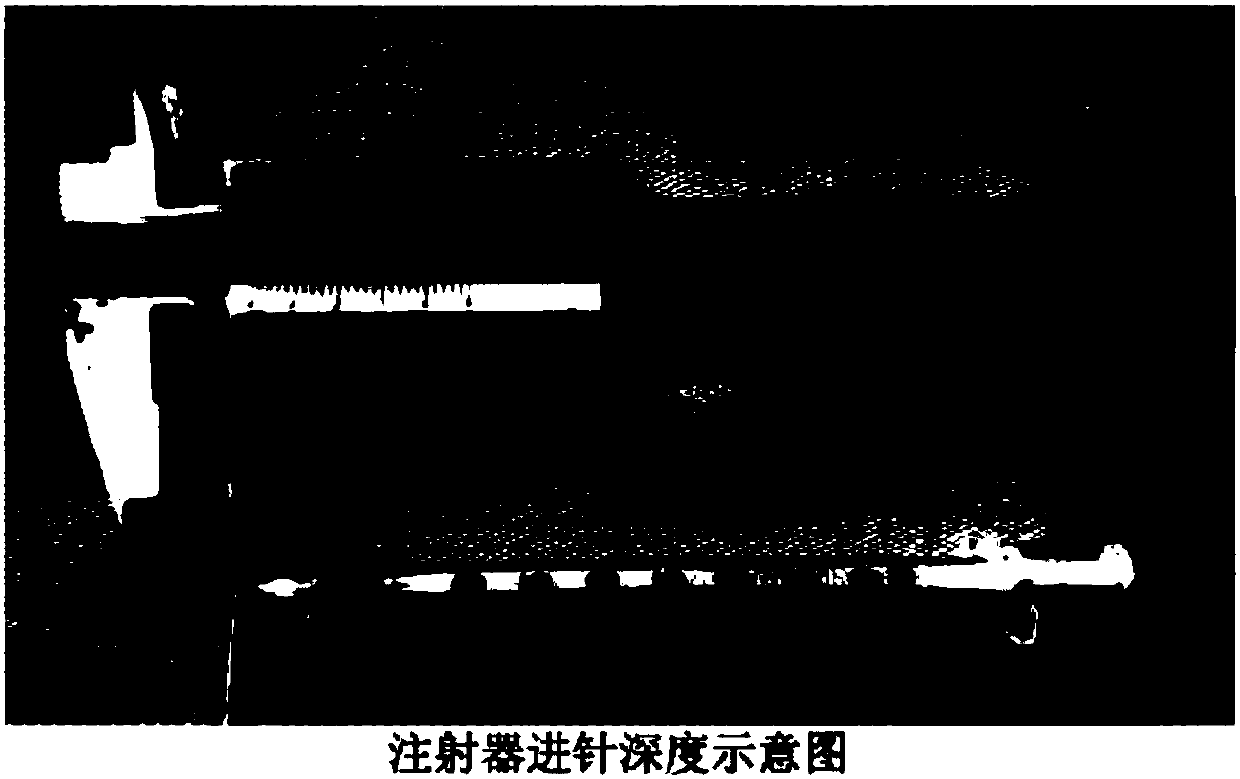Establishment and application of radiotherapy model for in-situ bearing cancer of mouse lung cancer
A mouse, in situ technology is applied in the field of establishing an in situ tumor-bearing model in mice, which can solve the problems of unstable tumor site size, high equipment requirements, and difficult operation, and achieves good application prospects, reliable results, Observe intuitive and convenient effects
- Summary
- Abstract
- Description
- Claims
- Application Information
AI Technical Summary
Problems solved by technology
Method used
Image
Examples
Embodiment 1
[0039] Example 1: Establishment method of an orthotopic tumor-bearing mouse model with normal immune function that can be used to evaluate the effect of radiotherapy
[0040] The research work of this project was approved by the Ethics Committee of the Second Military Medical University.
[0041] The firefly luciferase gene was introduced into the mouse Lewis lung cancer LLC cell line, and the tumor clone cell line stably expressing luciferase was obtained through subcloning screening and expanded. Use DMEM medium to resuspend the recombined LLC and prepare 2×10 6 concentration of the cell suspension for later use. After the C57BL / 6 mice were anesthetized with 10% chloral hydrate, they were placed on the left side of the operating table and fixed. After disinfection, the skin was incised at 10 mm to the right of the xiphoid process of the mouse sternum, and the anterior muscular layer of the right chest wall was peeled off to expose the thoracic wall and intercostal space of...
Embodiment 2
[0053] (1) The orthotopic tumor-bearing model of mice with normal immune function is the same as that in Example 1;
[0054] (2) Feeding of mice: Place the mice in a cage with daily change of litter at 25±1°C to ensure sufficient water and food.
[0055] (3) Three mice were selected respectively before tumor bearing and 1, 2, and 3 weeks after tumor bearing, and after being anesthetized with 10% chloral hydrate, the mice were killed and dissected, and the whole lungs of the mice were taken out. After washing in normal saline, the growth of the tumor was observed and its maximum diameter was measured. Such as figure 2 As shown in the lung tissue observation, it can be seen that the lung tissue of non-tumor-bearing mice is ruddy, smooth and elastic, and no tumor tissue is seen. One week after tumor-bearing mice, obvious tumor tissue can be seen in the lung tissue, with a maximum diameter of about 1 mm, a smooth surface, and a transparent serous interior. Two weeks after bear...
Embodiment 3
[0057] (1) The orthotopic tumor-bearing model of mice with normal immune function is the same as that in Example 1;
[0058] (2) Feeding of mice: Place the mice in a cage with daily change of litter at 25±1°C to ensure sufficient water and food.
[0059] (3) Three mice were selected respectively before tumor bearing and 1, 2, and 3 weeks after tumor bearing, and after being anesthetized with 10% chloral hydrate, the mice were killed and dissected, and the whole lungs of the mice were taken out. After washing in normal saline, the lung lobes with tumor growth were separated, and H&E staining was performed. Such as image 3 As shown, the pathological sections of lung tissue showed that the alveolar wall structure of non-tumor-bearing mice was normal. One week after tumor-bearing mice, pathological sections of the lung tissue showed obvious tumor tissue infiltration, and atypical cells in the tumor tissue grew densely and protruded from the surface of the lung tissue, completel...
PUM
 Login to View More
Login to View More Abstract
Description
Claims
Application Information
 Login to View More
Login to View More - R&D
- Intellectual Property
- Life Sciences
- Materials
- Tech Scout
- Unparalleled Data Quality
- Higher Quality Content
- 60% Fewer Hallucinations
Browse by: Latest US Patents, China's latest patents, Technical Efficacy Thesaurus, Application Domain, Technology Topic, Popular Technical Reports.
© 2025 PatSnap. All rights reserved.Legal|Privacy policy|Modern Slavery Act Transparency Statement|Sitemap|About US| Contact US: help@patsnap.com



